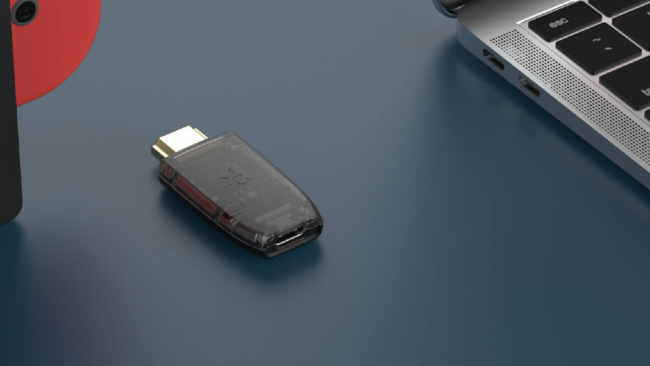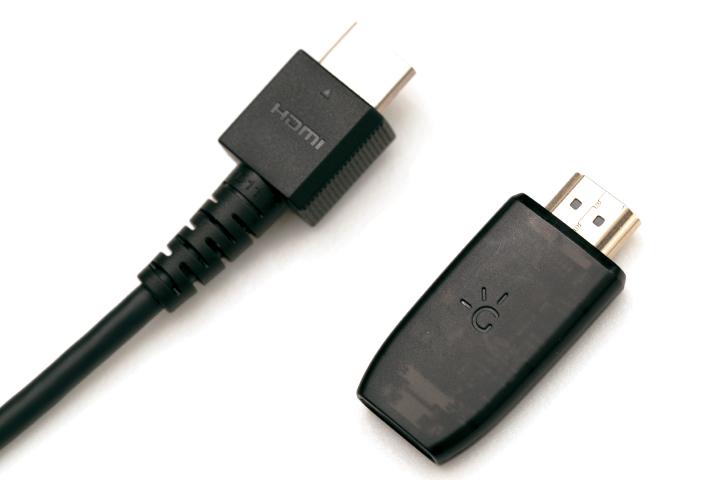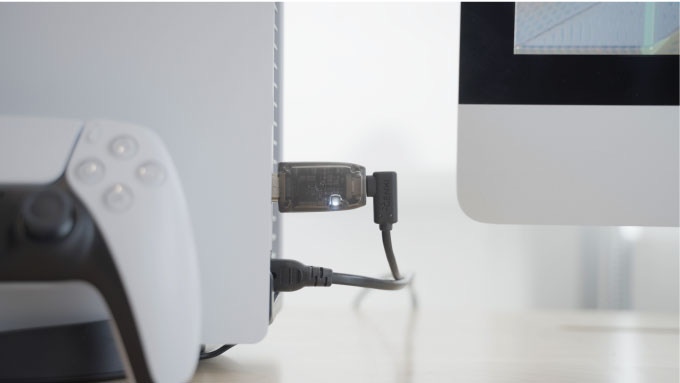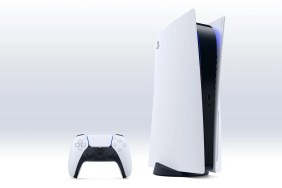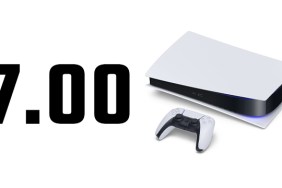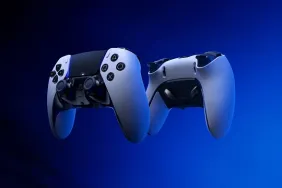The Genki Shadowcast’s main bullet point is “Play Game Consoles on your Laptop,” and to that end it succeeds, but what is the Genki Shadowcast really? Is it a capture card? Is it simple a monitor option? Does it somehow do all of that for a fraction of the price? We put the Genki Shadowcast to the test to see how it held up and what applications it works best for.
The ability to play your console on a laptop screen seems like somewhat of a niche need. For the most part, people who have consoles are going to have a screen through which to play it. However, the concept piqued my interest thanks to travel. I always take my laptop with me, so would this serve as an easy way to play my console on the go without needing to bring too many things along? The answer is… hypothetically. I still haven’t had the opportunity to actually travel with the Genki Shadowcast besides a pretend “vacation” to my office. But hey, it let me play my PS5 on my laptop screen during my workday, which is a win in my book.
The $50 device is tiny, barely bigger than the size of a normal HDMI cable input. This device changes the HDMI signal to a digital USB signal which can be output to your laptop via the included USB-C cable (or standard USB-A with an included adapter). You’ll need the Genki Arcade app to view the image—this doesn’t just turn your laptop screen into a monitor—but otherwise works simply to get your console’s screen and sound on your laptop.
You can also use third party apps like OBS to view the console, capture, and even stream, however third-party apps are apt to introduce latency into the connection. It’s not enough to be really detrimental—the games are still playable—but it’s that annoying kind of delay between input and what’s happening on the screen that makes everything feel just a little bit more floaty than it should be. Trying to aim in first-person shooters becomes quite the chore. Genki’s own app resolves this somewhat, but still has more latency than a direct HDMI connection to a TV or monitor.
Genki Shadowcast will also downgrade the performance of your consoles somewhat. You can select Resolution or Performance modes, but with the size of a laptop screen, it’s probably best to go with Performance to squeeze as many frames out of the connection as possible. While the accepted input on the Shadowcast is 4K/30fps or 1080p/60fps depending on which mode you are running it in, the USB output of each is 1080p/30fps or 720p/60fps. You’ll barely notice the decrease in resolution, but the increased frame rate of up to 60 fps is welcome, particularly considering the lag present on the former. Note that this will not artificially increase 30 fps games to 60 fps however. These are just target possible framerates based on the signal that the console is delivering to the Shadowcast.
Ganki Shadowcast Review – Quick Solution in a Pinch
In a pinch, Shadowcast could be a great tool to quickly capture video from your console if needed, though again, if you are using it with third-party software, you’ll have to contend with perceptible latency between the controller and screen. And Genki’s own app doesn’t offer any solutions for capture or streaming, so your forced to introduce other tools into the mix. On the one hand, this provides a ton of flexibility, but on the other, if you are already using these tools, you most likely have other solutions for capturing your gameplay.
Likewise with streaming, I don’t see anyone hitting the bigtime using Genki Shadowcast to live stream. Between the latency introduced once using other apps, and the processing power that’s required to run all those apps, it fails to meet the demands that other capture cards already address—albeit at lower price point than those other options. The latency isn’t horrible, but there’s a reason streamers will use passthrough devices to capture and play at the same time. Even the best capture cards introduce some latency. Elements like latency-free throughput, on-device capture, and higher quality output come with a cost, and Genki isn’t looking to compete directly against the likes of Elgato or AVerMedia. The Shadowcast simply wants to put your HDMI source output onto your laptop screen. What you do from there is up to you.
The brilliance of the Genki Shadowcast is not necessarily then in its advertised functionality for gaming, but in the possibilities of small device that can quickly turn an HDMI connection into a USB connection and link to your computer. Using it as a camera link to directly connect a DSLR camera (or other camera with an HDMI out) is a great option, and the small latency in the video doesn’t matter without a controller in your hands. In fact, the Genki Shadowcast can be used with virtually any HDMI source output to allow a direct feed to your laptop (or PC). I’m sure there are numerous other applications that this could be used for that I can’t even think of immediately.
Genki Shadowcast is a great device for quick and easy HDMI to USB conversion, and I’m sure I’ll occasionally find use for the device, however, it lacks the kinds of features I would need to add it in as a main part of my setup. It’s not a bad device at all, far from it. In fact, it’s quite brilliant in its simplicity. But the Shadowcast seems to cater towards casual application and quick solutions. It’ll be nice to have it in my go bag, however I just can’t see myself using it with any kind of regularity, particularly for gaming. It’ll get your console’s screen onto your laptop, but you’d most likely be better off asking why you need your console displayed on your laptop in the first place and approaching different solutions depending on your broader needs.
Genki Shadowcast review unit was provided by manufacturer. For more information, please read our Review Policy.
